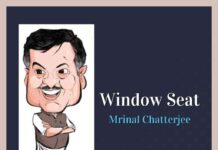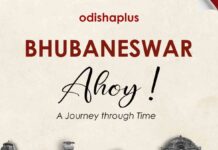Kailash Chandra Dash

Dance and song, two important parts of music represented Odia Cultural space in the colonial phase. Dance and songs were associated with the festivals like Jhulan and Melan in Odisha. The Natuas on these occasions not only danced but also sang devotional songs. Utkala Dipika commented that in the 19th century there was no real appreciation for music among the richer sections of the Odia society and that the Natua boys did not sing well on festive days. (Utkala Dipika, 21st August 1875) Emphasis was more given to sankirtan which did not possess the sweetness of good music.(Ibid.) As a matter of fact these sankirtans came from Bengal by the Goswamis and such type of music was unknown in Orissa in pre-Chaitanya period(Ibid). Very few jamindars of Odisha had real taste for songs and musical intruments in the 19th century. In some of the zamindar families in rural Odisha, there were groups of Natuas, but they did not improve the system of music.(Ibid.) There were some good singers in Cuttack in the beginning of the 19th century, but they were aided by outside singers on the Jhulan occasions. Such people were absent in 1878.(Ibid., 17th August, 1878) In Calcutta during this phase Surendra Mohan Tagore took pains to establish a Music School there and other musical institutions were opened in different parts of Bengal in course of time.(Ibid.)
In 1878 in Odisha Maharaja of Mayurbhanja had a proposal for the opening of a music school. It was proposed to Maharaja to provide stipend to two or three boys for musical training in his school not only from Mayurbhanj but also from other districts of Odisha. By this way musical activities were expected to be revived.(Ibid.) In the Binod Bihari Jhulan Yatra there was a test for the singers who were present there. Many music lovers of Cuttack gathered there. Such a tradition was prominently absent in 1884.(Ibid.,23rd August 1884) It was proposed by many to establish music schools in Odisha on the pattern of the music schools of Bengal where music had considerable progress.(Ibid.)

In Puri the Akharagharas were the centres of musical activities particularly on the occasion of Chandan Yatra. In Puri musical activities had remarkable progress in the 19th century due to the Akharagharas. (Ibid., 5th June 1875) Despite the indifference of the higher-ups of the society to the musical activities of the Akharagharas in Puri, the lower sections had still encouraged this art in the Akharagharas by which musical activities had got good progress there. (Ibid.)
The Odia Yatras in the 19th century were devoid of good music.(Ibid., 5th June 1880) There were famous singers in Odisha in the 19th century like Das Ray Govinda Adhikari and Gopal Odiya who were famous in Odisha and Bengal for the use of good songs in the Yatras. (Ibid.) They were able to captivate the attention of the audience by their songs in the Yatras. In the middle of the 19th century there were no good singers and music did not receive attention in Odisha. There were Pala singers and their qualities (if any) could be known in contest ; but they were not great poets. Their ideas could only appeal to some people who were not musicians. These Pala singers had some contribution to the musical programme in 19th century Odisha. (Ibid.) The need of a good singer was emphatically presented in thenewspapers in 19th century Odisha.
In the 20th century there was improvement of Odia music on the festive occasions. The singers and badakas (instrument players) in this phase were young people who had love for modern songs and bhajanas were also sung by them on festive occasions. (Ibid., 23rd August 1913)
In the 1920s there was an institution called Utkala Sangita Samaj and on behalf of this institution in 1924 in the Utkala Sammilani the song Bande Mata Payare was sung. (Asha, 7th July 1924) Odia songs of the medieval poets-Gopalkrishna, Upendra Bhanja, Dina Krishna, Abhimanyu, Banamali, Devadurlabh, Ramakrishna, Kavisurya, Brahma and Kavisurya Rayaguru had been very enchantingly sung in the colonial period and these songs were even sometimes felt to be superior to that of Chandidas, Vidyapati, Gobinda Das, Jadunandan Das and Narottama Das of Bengal. (Ibid., 27th May 1929) But the songs of Bengali poets were extra -ordinarily popular in each house in Bengal and these songs excited the nationalist passion of the Bengalis.(Ibid.) Mohan Sundar Goswami lamented that in Odisha this passion was absent.(Ibid.)He insisted on the recitation of the devotional songs of the medieval Odia poets and suggested that these should be sung in the manner of kirtan.(Ibid) He also said that the Natua boys in Odisha should sing these songs; every home in the villages should adore the Odia songs and that in every village there should be sangita mela.(Ibid). With khola and Karatala the padavalies of Utkala should be recited in every part of Odisha. (Ibid.)
For the revival of Odia music there was the need of a national institution and such an institution was established in Cuttack by the untiring effort of Lakshmikanta Chaudhury from November 1933. It was called Utkala Sangita Samaj. (Nababharat, 1342 Sala/Karkata, .163-164) In the end of 1934 the members of the Sangita Samaj were fiftythree and many leading people of Odisha were its members. Three branch schools of this Samaj were also established. The main school was in Sri Ramachandra Bhavan where Gopal Prasad Ghosh was appointed as a teacher. On behalf of the Samaj the most famous Odia singer Aparna Panigrahi was sent in 1933 to attend All-India Music Conference in Allahabad University and there he got great recognition. (Ibid.) The Samaj had no permanent office and it functioned in Ramachandra Bhaban.

The Samaj was established with a view to develop the music in Odisha in general and to base its indigenous musical culture on a scientific foundation in particular. It was duly registered as a cultural body in 1940. Nabeen, 6th April, 1948) During the 14 years (1933-48) the Samaj had certainly played no insignificant part in the changed outlook of the people of Odisha with regard to music and in its adoption as an art. Artists of reputation and lovers of music in higher sphere of work, men holding high and responsible position had joined the Samaj either as patrons, life members or ordinary members(Ibid) Their active interest in it had become a source of encouragement to the members of the Executive Committee with whom the sole management of the Samaj rested. In 1948 there were fourteen members of the Executive Committee with Raibahadur Banchhanidhi Mahapatra as its president.(Ibid) The Utkala Sangita Vidyalaya which was a necessary adjunct of the Samaj was formally opened by the Raja and Ruling chief of Athamallik State on the 26th January 1934.(Ibid.) In 1943 in the month of August the nomenclature of the school was changed in order to commemorate the sweet memory of its founder Lakshmikanta Chaudhury.(Ibid.) Since then regular classes were being held in the afternoon with students both male and female in a hired building taken for the purpose at Ganesh Ghat, Cuttack. (Ibid.) The teachers of the school in 1948 were :
- Prof. Dhirendra Kumar Das, B.Mus. (Lucknow) for classical music.
- Gayakaratna Singhari Shyam Sundar Kar, Sangit Bisarad for Karnatic music.
- Madhusudan Ghosh for instrumental music.
- Nrusimhanath Khuntia for Karnatic music.
On 10th May 1948 All Orissa Sangit Sammilani was held in Berhampur(Ibid.,18th May 1948) It was attended by singers-Jatin Das, Bhubaneswar Mishra, Upendra Tripathy, Dhirendra Kumar Das, Madhusudan Ghosh, Benodbihari Harichandan, Radhamani Biswakarma, Narayan Behera from Calcutta, Madhuri Panda from Aska and Somanath Patra.(Ibid)
Another session of All Orissa Music Conference was held on 19th May 1949 in Boirani(in the field of Gandhi Kalamandir).(Ibid., 31st May 1949) Lachman Khadanga captivated the audience by his play on bina (flute). About hundred singers from different parts of Odisha joined the conference. Radio artist Balakrishna Dash, Bhubaneswar Mishra, Radhagovinda Ghosh, Madhuri Panda, Kasturi Devi, Satyabati, Binod Srichandan, Sisir Kumar Pattadeb, Sadasiva Sahu, Kasinath Padhi etc. attended the session. A proposal to construct a Kalamandapa in Odisha constituting the following members was passed in the Conference. (Ibid) The members were-
- Tarini Charan Patra, Professor of Vinabadan
- Kabichandra Kalicharan Pattnaik
- Kshetramohan Kar
- Balakrishna Dash
- Krishnachandra Panda
As early as 1938 Odias asserted that in the field of music (particularly songs and lyrics) Odisha had a respectable place.(Asha,21st November 1938) They talked of Odisi Sangita in this phase to assert Odia’s distinctiveness in music. The role of Utkala Sangita Samaj was very significant for highlighting Odisi Gita and Sangita.(Ibid.) On behalf of the Samaj, Snehamayi,a daughter of Lakshmikanta Chaudhury(only 9 years old) had presented the playing of Sitar excellently in the All India Music Competition at Allahabad.(Ibid.) In order to encourage and expand this field of art, the Odias presented that there was elaborate discussion of music in early Odisha and that this was disrupted due to political reason. (Ibid.) They opined that music was the parameters of the cultural identity of the race and its revival in the 20th century was a great achievement for them.(Ibid.)

In a presidential speech in the music branch of the Utkala Sahitya Samaj Krishna Prasad Basu stated about the musical activities in Odisha. (Nababharat,Dhanu/,1345,p.482-491) Basu had deep admiration for the medieval Odia poets. These poets were excellent singers. He stated that in Parlakhemundi,thekheyalscomposed by Gaurahari Parichha and Haribandhu Bebarta Pattnaik were sung and they were higher than the champus of Kavi Surya. In chhatrapur he stated that Kanhei Sasmal sang a song which was of high order and his fame did not extend beyond Risikulya. Utkala Music was enriched by them. He highlighted the contributions of Krishna Mohan Pattnaik of Chanahat, Kabibar Lakshmikanta Mahapatra, Kavichandra Kalicharan Pattnaik, Govinda Chandra Suradeo and Banchhanidhi Mohanty.
Basu stated in his speech that Moghul Tamasa was very popular in Bhadrak in the colonial phase.(Ibid.) A compound of Odia, Parsis and Urdu was found in Mughal Tamasa which was a type of Tumri. It contained songs on Mughal admiration for Odia life and culture. The songs of the Tamsa were composed by Ballabha Chakravartti. (Ibid). Besides Dalkhai, Dumpha ,Doli, Kumar Punei and Chaitra Punei songs were indicative of Odia love for music. (Ibid). According to Basu Cuttack was the main centre for the revival of music in the first phase of the 20th century. The effort of Gopal Chandra Ghosh, Gokul Chandra Sri Chandan, Panchanan Sanyal were very commendable for the revival of musical activities in Cuttack.(Ibid) The famous singers Appanna Pani, Haricharan Pali and Munshi Khan Muhammed who left the world by 1937 were the sources of Odia inspiration.(Ibid.)
Samanta Shyam Sundar Dhir of Madhupur ( A.D. 1898) was a famous singer in this phase. He was the son of Jagabandhu Dhir Samanta Singhar and Sita Devi. He was involved in musical activities in Cuttack for 25 years. He was an expert in Sitar and Tanpura. He had great love for Odisi and had a name in Dhrupad. (Nabeen, 23rd August 1938) Gokul Srichandan was another famous singer in this phase by whose effort in 1938 Kumari Pratibha Banerji (daughter of Sibendranath Banerji-Zamindar) became a famous singer in Odisha. Srichandan was the music teacher in Ravenshaw Girls’ School. (Ibid., 16th August 1938) Nimai Harichandan was another devoted singer in Odisha whose discourse on music delivered in Baripada Sahitya Samaj in the second annual session constituted an interesting reading of Odia music. (Bhanja Pradipa, Vol. V., No. IV, Asadha/ 1343).

In the 1930s Odia songs appeared in Gramphone-an event which highlighted the Odia cultural space. In 1935 eight songs of Harichandan were recorded by the Gramphone Company and four hundred records were prepared by that date. (Asha,23rd August 1935)The Bolanki, a company of Madras once stated that Odia songs could not be recorded because there were about six to seven Odias who could purchase a gramphone.(Ibid.) On the basis of the sale of the gramphone the companies had taken control of the areas. (Ibid.)These companies associated Odisha with Madras for the purpose of sale. It was believed in 1935 that there would be no such trouble (like the dependence of Odias on the Madras Companies).(Ibid.) There was fear that the songs of South Odisha were leaning towards Telugu and that of North Odisha towards Bengalee. It means that the taste for music in Odisha was not uniform and this led to the problem for the sale of the records. Lakshmi Narayana Sahu in his New Orissa also stated that he would unite the Gramphone agents and the Odia singers and players. (Ibid.) There was a call to utilise this opportunity offered by Sahu to the singers of Odisha. Kishore Chandra Parichha from Gunupur in 1935 stated that the songs of Aparna Panigrahi who was admired by music professer Abdul Karim in the All India Music Competition and got more time to sing in the stage should be recorded and this would be gracefully done by Parla chief.(Ibid.)
By September 1936 many Odia songs were recorded for Gramphone play. (Nabeen,September 8,1936). Most of them were old champus and chhandas and they were widely circulated and appreciated. Odias instead of Bengali songs could listen to the Odia songs and that animated their patriotism. It was pointed out in 1936 that Odia songs were corrupted for Odia association in the four different provinces and the revival of Odia music would assert the real Odia cultural identity. The owner of Lakshmi Bhandar and HMV Gramophone company’s Agent lakshman Sahu both had taken the responsibilities of releasing some Odia gramophone records in 1935-36. (Ibid.) For Ganjam and Jeypur there was needed a representative to select singers for Gramophone Company in 1936 and till date no Odia singer in Ganjam had recorded their songs in the Gramophone records.(Ibid.) While recording Odia songs it was asserted that the Odia singers should have to consider the Odia taste. (Ibid.) Odias had thus concern for the preservation of Odia songs in this phase and this was an articulation of Odia cultural identity. Odia songs were circulated from 1945 from Calcutta Radio Station and in 1948 January a Radio Station was established in Cuttack which circulated Odia songs properly. (Senapati 1997) In 1950 the National Music Association was established by Bibhuti Tripathy and Suren Mohanty for teaching Odia classical music and lastly in 1952 Kalabikas Kendra was established in Cuttack by the effort of Babulal Joshi and others which was responsible for the development of Odia music. (Ibid.)
Dance was a significant part of Odia cultural space in the colonial and post-colonial phase. There were Gotipua dance, Desiya dance, Mahari dance and Chhau dance in Odisha in the 19th and 20th century. On festive occasions in the 19th century Odisha Gotipua dance and Bali natch (female dancers) were very popular in Odisha. Maharis had their dance in the temple of Jagannatha at Puri. (Dash 2000:41-42; Pattnaik 1978; Pattnaik 1971/1990) It was known in the pre-colonial period as well as in the colonial period. The Mahari dancewas an important part of Jhamu festival in the Mangala temple of Kakatpur (Puri) which was observed in the month of April. (Utkala Dipika,29th April 1911) The Gotipuas preserved the old style of dance in Odisha in the colonial period. Such dancing received continuous patronage from the Maths, Akharagharas and Zamindars in Puri and outside of it. Amongst the teachers of the Gotipua dance in the 20th century were Basudeva Mahapatra of Khurdha, Kartik Sahu of Bhingarpur (Puri) and Somanath Mohapatra in the district of Cuttack. (Pattnaik1978) Both Gotipua and Mahari -Devadasi dance constituted Odisi dance in the 1930s. The development of dance in the temples of Odisha in the pre-colonial period was adopted in the colonial phase. The dance masters added their imaginative touches and the scholars played their role in explicating from ancient dance texts and sculptural depictions. The result is the Odisi dance. As a totality this is new, although it contains much from the past. (Seneviratne 1998: 18-19)

Chhau dance like Odisi dance was very popular not only in Mayurbhanja, Singhbhum and in the Garjats of Odisha in the colonial phase, it became an attractive theme of amusement in India and abroad due to the extra-ordinary role of Subhendu Narayana in the 1930s. This prince of Sareikella although lived upto 1944 made this dance so popular in India and abroad that Odisha was well remembered for it. (Chaturanga, 18th Febrary 1947, Ist Year, 10th Issue)
In the colonial phase Odia cultural spacewas fostered by many non-Odias. The cultural activities though some-time reflected a broad Hindu/ India thought also presented distinctiveness sometimes by construction and sometimes by a continuation of the past.



























